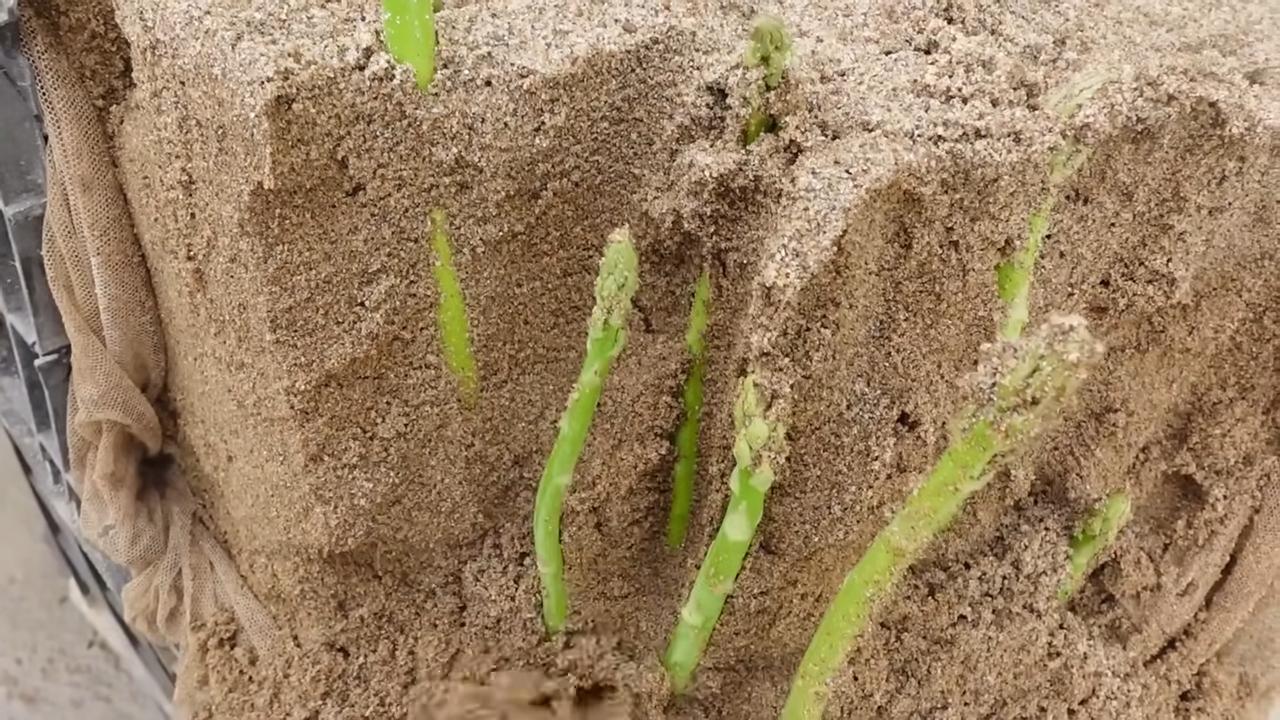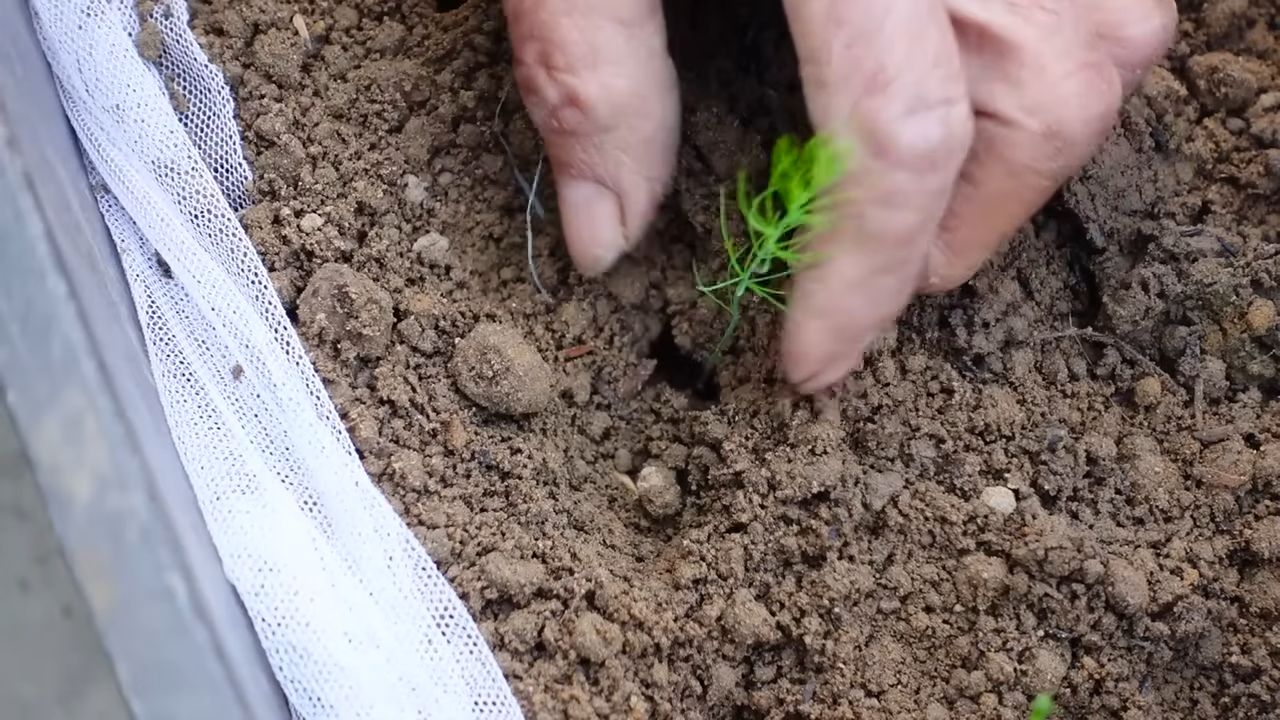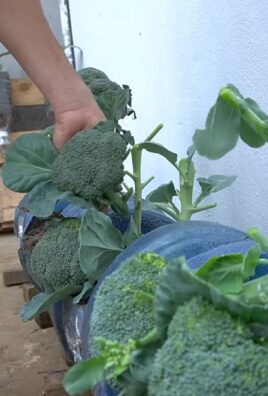Grow Your Own Asparagus: Imagine stepping into your backyard and harvesting fresh, tender asparagus spears, bursting with flavor, just minutes before adding them to your dinner plate. Sounds idyllic, right? Well, it’s more achievable than you might think! For centuries, asparagus has been prized for its delicate taste and nutritional benefits, enjoyed by ancient Romans and gracing the tables of royalty. But you don’t need a sprawling estate or a team of gardeners to enjoy this springtime delicacy.
This DIY guide is your key to unlocking the secrets of cultivating your own asparagus patch, even if you’re a complete beginner. Forget expensive grocery store prices and questionable freshness. I’m going to show you simple, effective tricks and hacks that will empower you to grow your own asparagus successfully, regardless of your gardening experience or space constraints.
Why is this DIY trick so important? Because fresh, homegrown asparagus tastes infinitely better than anything you can buy in a store. Plus, you’ll know exactly where your food is coming from and how it was grown. In this article, I’ll guide you through everything from choosing the right asparagus variety to preparing your soil and harvesting your first delicious spears. Get ready to embark on a rewarding gardening journey that will bring fresh, flavorful asparagus to your table for years to come!

Growing Asparagus in Your Own Garden: Here’s How to Succeed!
I love asparagus! And what could be better than harvesting it fresh from your own garden? It might seem a bit intimidating at first, but with the right preparation and a little patience, you too can soon enjoy your own asparagus. Here, I’ll show you how it’s done!
The Basics: What You Need to Know Before You Start
Before we dive into the details, here are a few important points to consider:
- Patience is required: Asparagus takes time. Expect to get your first small harvest in the third year after planting. But believe me, the wait is worth it!
- The right location: Asparagus loves the sun! Choose a sunny spot in your garden that gets at least six hours of direct sunlight per day.
- The soil needs to be right: Asparagus needs well-draining, sandy loam soil. It does not tolerate waterlogging at all.
- The right variety: There are different asparagus varieties that vary in taste, yield, and disease resistance. Find out which variety is best suited for your region. Popular varieties include ‘Huchels Leistung’, ‘Gijnlim’, or ‘Ramires’.
- Planting time: The best time to plant asparagus is in the spring (March/April) or fall (September/October).
Step-by-Step Guide: How to Plant Your Own Asparagus
Now, let’s get down to business! Here is a detailed guide on how to plant your own asparagus:
1. Prepare the soil: The key to successful asparagus cultivation is proper soil preparation.
- First, remove all weeds, stones, and roots from the area.
- Loosen the soil thoroughly, preferably with a digging fork or a spade.
- Amend the soil with compost, well-rotted manure, or horn shavings. This provides good nutrients and improves the soil structure. I also like to mix in some sand to increase drainage.
- The soil’s pH should ideally be between 6.5 and 7.5. You can check the pH with a test kit from a garden center and adjust it with lime or sulfur if necessary.
2. Select the asparagus plants: You have two options: you can buy asparagus plants (also called crowns) or sow asparagus seeds. I recommend starting with plants, as it’s faster and you can harvest sooner.
- Buy healthy, strong asparagus plants from a nursery or a specialized retailer. Make sure the plants are well-rooted and show no signs of diseases or pests.
- The plants should ideally be one to two years old.
3. Dig the asparagus trench: Now comes the fun part!
- Dig a trench that is about 30-40 cm (12-16 inches) deep and 40-50 cm (16-20 inches) wide. The length of the trench depends on how many asparagus plants you want to set.
- The distance between the trenches should be about 1.5 meters (5 feet). This gives the plants enough space to grow and makes care easier.
4. Plant the asparagus crowns:
- Create a small mound of soil at the bottom of the trench.
- Place the asparagus crowns on the mound so that the roots hang down.
- The distance between the plants should be about 30-40 cm (12-16 inches).
- Cover the roots with about 10 cm (4 inches) of soil.
- Water the plants thoroughly.
5. Fill the trench:
- Gradually fill the trench with soil as the asparagus plants grow.
- Make sure the shoot tips are always visible.
- Over the course of the summer, you will fill the trench completely.
Care: How to Keep Your Asparagus Healthy and Productive
Proper care is crucial for a rich asparagus harvest. Here are a few tips:
- Watering: Asparagus needs regular water, especially during dry periods. Make sure the soil is always slightly moist, but not wet.
- Fertilizing: Fertilize your asparagus in the spring and summer with compost, horn shavings, or a special asparagus fertilizer.
- Weeding: Keep the asparagus area free of weeds. Weeds compete with the asparagus for nutrients and water.
- Mulching: A layer of mulch made of straw, wood chips, or grass clippings helps to keep the soil moist, suppress weeds, and fertilize the soil.
- Diseases and Pests: Asparagus can be affected by various diseases and pests, such as the asparagus beetle or asparagus rust. Check your plants regularly and take action if necessary. There are various organic and chemical products available at specialty stores to combat diseases and pests.
The Harvest: Finally, Enjoying Your Asparagus!
After about three years, you can finally harvest your own asparagus!
- Harvest time: The asparagus harvest usually begins in April and traditionally ends on St. John’s Day (June 24th). After this date, the plants need time to recover and gather strength for the next year.
- Harvesting technique: Cut the asparagus with a special asparagus knife about 20-25 cm (8-10 inches) below the ground. Be careful not to damage the surrounding asparagus shoots.
- Harvest frequency: In the first few years, you should only harvest a few asparagus spears per plant to avoid weakening them. As the plants age, you can increase the harvest.
- Storage: Fresh asparagus has a limited shelf life. Wrap it in a damp cloth and store it in the refrigerator. However, it tastes best when you prepare it right after harvesting.
Extra Tips for Growing Asparagus
- White asparagus or green asparagus? White asparagus is grown underground and is therefore white. Green asparagus grows above ground and is green. Growing white asparagus is a bit more work, as you have to mound up the soil over the asparagus rows.
- Asparagus in a pot? Yes, it’s possible! If you don’t have a garden, you can also grow asparagus in a pot. Choose a large pot with good drainage and use a special asparagus soil.
- Propagating asparagus: You can propagate asparagus by dividing the roots. Dig up the plants in the fall and carefully divide the roots. Plant the divided sections in a new location.
I hope this guide has helped you grow your own asparagus. With a little patience and care, you will soon be rewarded with a bountiful harvest. Good luck

Conclusion
So, there you have it! Growing your own asparagus isn’t just a gardening project; it’s an investment in years of delicious, fresh harvests right from your backyard. Forget the limp, expensive spears at the grocery store. Imagine stepping outside and snipping vibrant, tender asparagus whenever you crave it. The satisfaction of nurturing these plants from crowns to culinary delights is truly unparalleled.
This DIY trick for cultivating asparagus is a must-try for several compelling reasons. First, the flavor difference is undeniable. Homegrown asparagus bursts with a sweetness and freshness that commercially grown varieties simply can’t match. Second, you have complete control over the growing process, ensuring your asparagus is free from harmful pesticides and herbicides. Third, it’s a sustainable and rewarding way to contribute to your own food security. And finally, it’s surprisingly easier than you might think!
Don’t be afraid to experiment with different asparagus varieties. ‘Jersey Knight’ is a popular choice for its high yields and disease resistance, while ‘Purple Passion’ offers a unique color and slightly sweeter flavor. Consider companion planting with herbs like parsley and basil, which can help deter pests and enhance the growth of your asparagus. You can also amend your soil with different types of compost to see what works best for your specific growing conditions.
We highly encourage you to embark on this asparagus-growing adventure. It’s a project that will reward you with years of culinary pleasure and a deeper connection to the food you eat. Remember to be patient – asparagus takes time to establish, but the wait is well worth it.
Once you’ve harvested your first spears, the possibilities are endless. Grill them with a drizzle of olive oil and a sprinkle of sea salt, roast them with lemon and parmesan, or add them to your favorite spring pasta dish. The taste of homegrown asparagus is a true celebration of the season.
Don’t hesitate to share your experiences with us! We’d love to hear about your successes, challenges, and any unique tips you discover along the way. Post photos of your asparagus patch, share your favorite recipes, and let’s build a community of passionate home gardeners. Let us know if this **grow your own asparagus** guide helped you. Happy growing!
Frequently Asked Questions (FAQ)
How long does it take to grow asparagus from crowns?
It typically takes two to three years to harvest asparagus after planting crowns. The first year is crucial for the plants to establish a strong root system. You can harvest lightly in the second year, but a full harvest should wait until the third year. Patience is key! Rushing the harvest can weaken the plants and reduce future yields.
What is the best time of year to plant asparagus crowns?
The best time to plant asparagus crowns is in early spring, as soon as the soil can be worked. This allows the plants to establish themselves before the heat of summer. In warmer climates, you can also plant in the fall.
What kind of soil is best for growing asparagus?
Asparagus prefers well-drained, sandy loam soil with a pH between 6.5 and 7.5. Amend heavy clay soil with plenty of organic matter, such as compost or well-rotted manure, to improve drainage. Asparagus roots can rot in soggy soil.
How deep should I plant asparagus crowns?
Dig a trench that is 6-8 inches deep and 12 inches wide. Create a small mound in the center of the trench and place the asparagus crown on top of the mound, spreading the roots out around it. Cover the crown with 2 inches of soil. As the asparagus spears grow, gradually fill in the trench with soil until it is level with the surrounding ground.
How much sun does asparagus need?
Asparagus needs at least 6-8 hours of sunlight per day to thrive. Choose a location in your garden that receives full sun.
How often should I water asparagus?
Water asparagus regularly, especially during dry periods. Aim to keep the soil consistently moist but not waterlogged. A good rule of thumb is to water deeply once a week, or more often during hot weather.
How do I fertilize asparagus?
Fertilize asparagus in early spring before the spears emerge and again after the harvest season. Use a balanced fertilizer, such as 10-10-10, or amend the soil with compost or well-rotted manure. Avoid over-fertilizing, as this can damage the plants.
How do I harvest asparagus?
Harvest asparagus spears when they are 6-8 inches tall and about as thick as your finger. Cut the spears at ground level with a sharp knife. Avoid harvesting all the spears in the first few years, as this can weaken the plants.
How do I care for asparagus after the harvest season?
After the harvest season, allow the asparagus ferns to grow and mature. These ferns will provide the plants with energy for the following year’s growth. In the fall, after the ferns have turned brown, cut them back to ground level.
What are some common pests and diseases that affect asparagus?
Common pests that affect asparagus include asparagus beetles and aphids. Diseases include asparagus rust and Fusarium crown and root rot. Practice good garden hygiene, such as removing weeds and debris, to help prevent these problems. You can also use organic pest control methods, such as insecticidal soap or neem oil.
Can I grow asparagus in containers?
Yes, you can grow asparagus in containers, but you will need a large container (at least 18 inches in diameter and 24 inches deep) to accommodate the roots. Use a well-draining potting mix and provide plenty of sunlight and water. Container-grown asparagus may not be as productive as asparagus grown in the ground.
How long will an asparagus plant last?
With proper care, an asparagus plant can last for 15-20 years or even longer.
What are some good companion plants for asparagus?
Good companion plants for asparagus include tomatoes, basil, parsley, marigolds, and nasturtiums. These plants can help deter pests and improve the growth of asparagus.
Is asparagus a perennial?
Yes, asparagus is a perennial plant, meaning it will come back year after year. This makes it a great investment for your garden.
Can I grow asparagus from seed?
Yes, you can grow asparagus from seed, but it takes longer to establish than growing from crowns. It can take up to three years to harvest asparagus grown from seed.




Leave a Comment